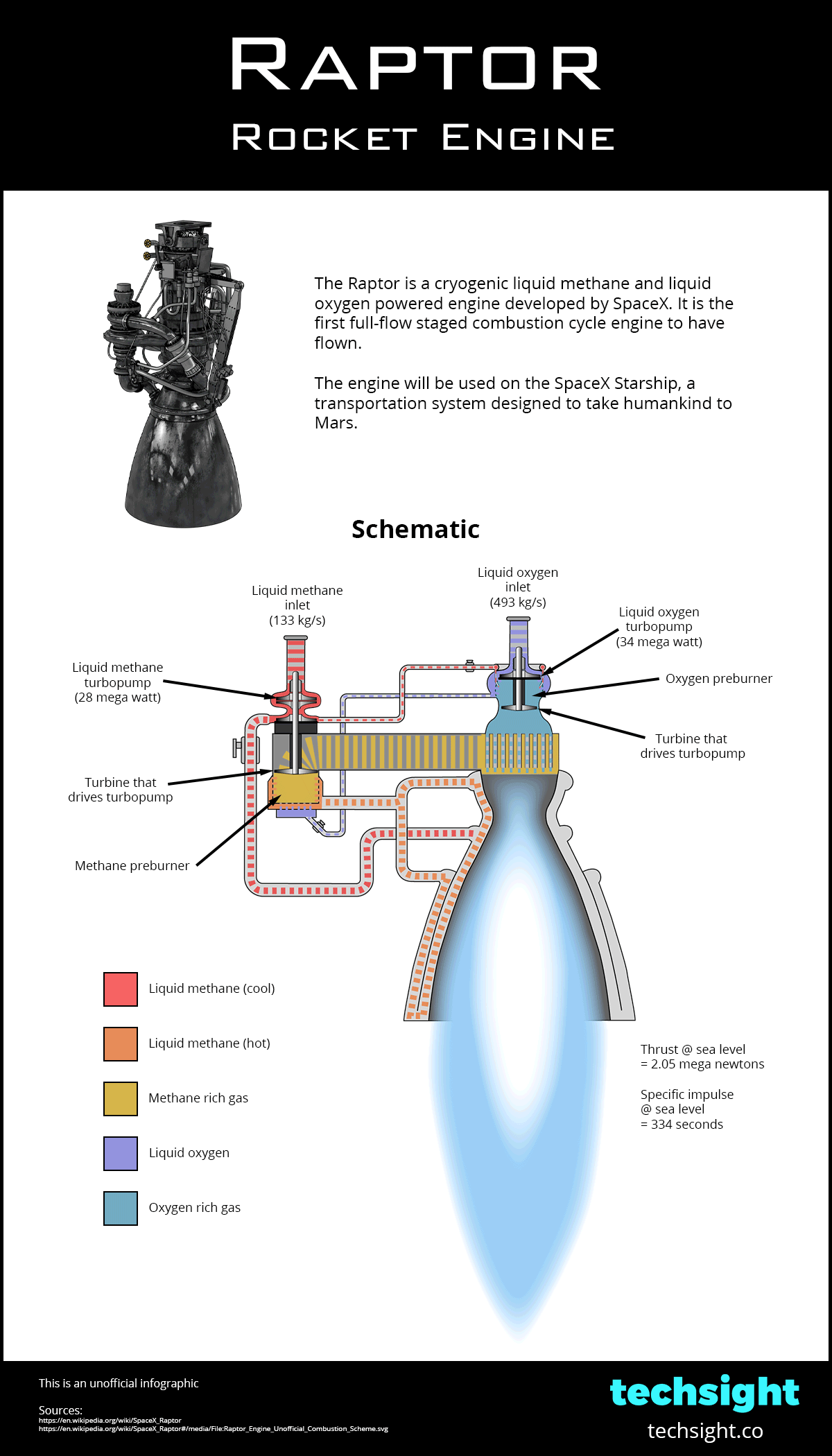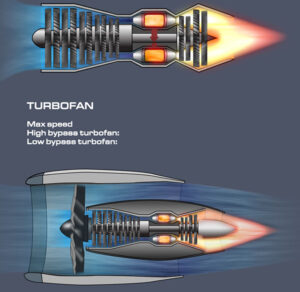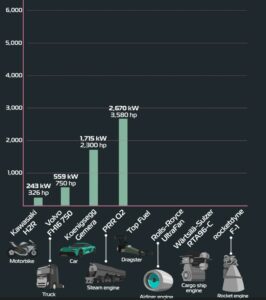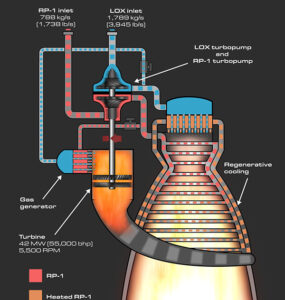
The Raptor is a cryogenic liquid methane and liquid oxygen powered engine developed by SpaceX. It is the first full-flow staged combustion cycle engine to have flown.
The engine will be used on the SpaceX Starship, a transportation system designed to take humankind to Mars.
Why the Raptor engine uses liquid methane and oxygen propellant
Rocket engines provide thrust by forcing a fuel to react with an oxidizer. The reaction between these propellants is what you call combustion.
Methane is an unusual choice for rocket fuel. Traditionally, RP-1 (a refined form of kerosene) or hydrogen are the fuels used for launch vehicles.
SpaceX chose methane as the Raptor’s fuel for one main reason – their ambition to go to Mars. Unlike RP-1 and hydrogen, methane will be relatively easy to make and keep in the liquid state on Mars. This makes missions to Mars possible without the need to bring extra fuel for the return trip.
The methane fuel is cryogenic – meaning it is cooled to a liquid state. This increases the density of the methane and allows more of it to be carried by the rocket.
The Raptor’s oxidizer, oxygen, is also cryogenic. While rocket engines could theoretically use other substances as an oxidizer, liquid oxygen is the only one that has ever been used.
The full-flow staged combustion cycle
While other full-flow staged combustion cycle engines have been lab tested in the past, the Raptor is the first to have flown. This type of combustion cycle is particularly complex.
‘Staged combustion’ refers to some of the combustion occurring in preburners before the main combustion chamber. These preburners drive turbines, which in-turn drive turbopumps. The turbopumps increase propellant flow rate and therefore the thrust generated by the engine.
‘Full-flow’ refers to all of the propellant passing through a preburner. One preburner drives a turbopump for the liquid methane and produces methane-rich gas. The other preburner drives a turbopump for the liquid oxygen and produces oxygen rich gas. These gases then combust together in the main chamber and provide thrust.
Regenerative Cooling
The Raptor uses regenerative cooling. This involves sending the cryogenic methane around the outside of the main combustion chamber to keep it cool. The warmed liquid methane then flows to the preburner to continue the cycle.
How Good Is The Raptor engine?
The Raptor is the ultimate all-rounder. It’s not the most powerful, nor the most efficient rocket engine ever produced. It however, does not perform poorly in any way.
Reusability has been a big consideration in the Raptor’s design. SpaceX aims to reuse each engine 1000 times. As most other rocket engines have had little to no reusability, the cost per flight of the Raptor will be comparatively low. This will make space travel more economical and accessible in the future.
References
For more info on the Raptor, I recommend watching this video by the Everyday Astronaut.
The schematic is based on the one that can be found on Wikipedia.


